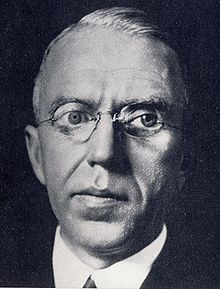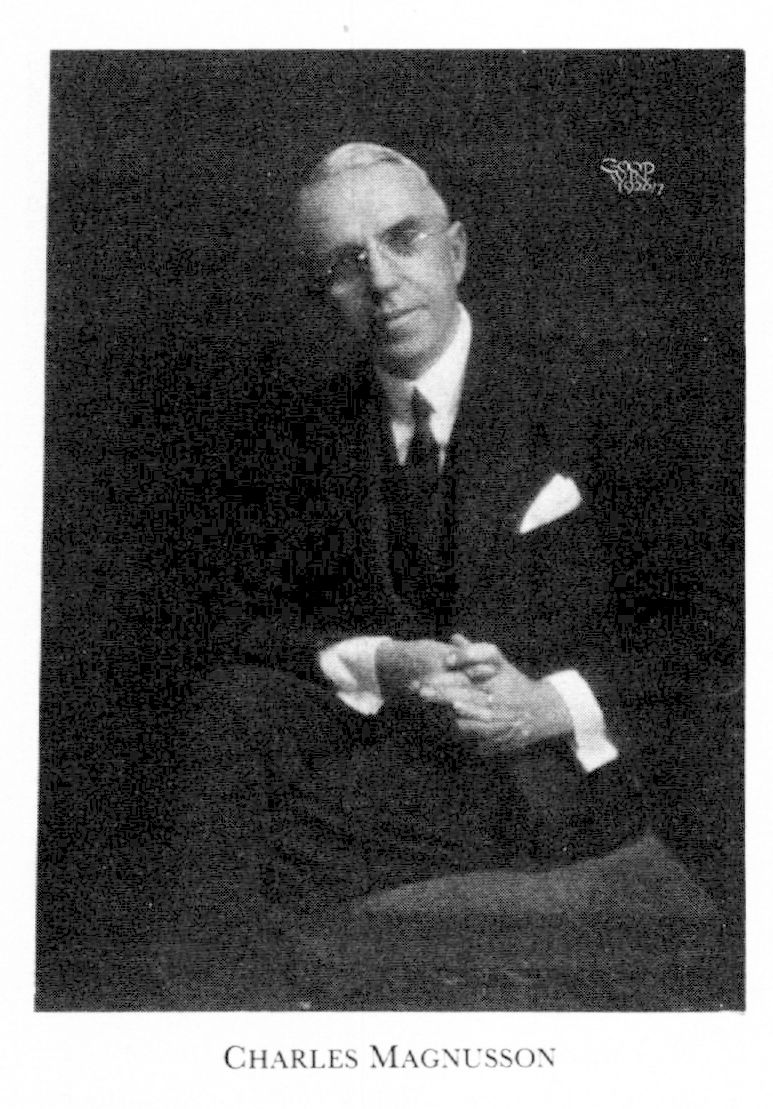Charles Magnusson
Charles Fredrik Magnusson ( born January 26, 1878 in Gothenburg, † January 18, 1948 in Stockholm) was a Swedish cinematographer, film producer and screenwriter. He is considered a pioneer of the Swedish film.
Life and work
The son of an architect was a trained photographer. His first steps in the fledgling silent film he made as a cameraman for the young Swedish newsreel since 1905; In 1907 he founded with colleagues, the first professional association of cinematographers in Sweden. In 1909 he became director and producer, founded in 1907 in Kristianstad Swedish film production company AB Svenska Biografteatern (Svenska Bio ), chose the fabrics from script (a few scripts he wrote himself ) and influenced the movie aesthetic style of the film company. As the first in Sweden at all, he produced films feature length with epic -scale action. He let the directors a free hand, but drove the baseline: He encouraged the directors to go from the studio out into nature and not to let the actors so far theatrically artificial but possible lifelike act as in natural scenes. This has been a major influence on the Swedish silent film and earned him an international success.
With the relocation of the production company in the Swedish capital in 1911 began under Magnusson's leadership, the international importance of the early Swedish silent film to grow: he discovered the directors Victor Sjöström and Mauritz Stiller and engaged her for Svenska Bio. Swedish countryside, Swedish history, folk tales and literature were Swedish Magnusson's main interests and determined the material selection of the films produced by him. Magnusson acquired the film rights to all works Selma Lagerlöf, leaving works of Henrik Ibsen film. So Swedish silent film classics like Terje Vigen emerged after a ballad by Ibsen and The Girl from the marsh croft, both directed by Sjöström, or 1919 Sir Arne treasure to Selma Lagerlöf, directed by Mauritz Stiller. Not all films produced by Svenska Bio, however, were personally produced by Magnusson, who had overall management of the company.
Meanwhile, had discovered the burgeoning film industry in Sweden as lucrative line of business for investors. Following the merger of Svenska Bio and film production company film industry Skandia AB to Svensk Industri film in December 1919, the main shareholder, the billionaire tycoon and Ivar Kreuger, Magnusson made the first director. In the following years the company grew under Magnusson line to one of the leading film studios in Europe, with offices in Amsterdam, Berlin, London, Paris and New York City; 1920 built its own film city film Staden was considered a " Swedish Hollywood".
1924 received Magnusson accompanied by Ivar Kreuger, the young Greta Garbo as well as their discoverer Mauritz Stiller, the sen former world stars and co-founder of United Artists, Mary Pickford and Douglas Fairbanks., Who had traveled at the invitation of Svensk film Industri in Sweden, and accompanied them under immense interest of the population on a tour of Stockholm. At this time, Magnusson was no longer active as a producer, but responsible for the operational activities of Svensk Industri film. His last work as a producer in 1923 was a manor Sage to Selma Lagerlöf under Stiller directed. Shortly after the encounter with the Hollywood Stars in Stockholm Stiller and Garbo left Sweden for America; Sjöström had gone down this path already a few years earlier. As a result, Svensk Industri film ran into financial difficulties, it came to internal disputes and Magnusson, who was regarded as economically inept, the company was forced to leave; his directorship was occupied by a financial expert. From then on, he retired in the late 1920s completely out of the film business. One of his last activities in the film was the idea to build the movie theater Chinateatern in Stockholm.










